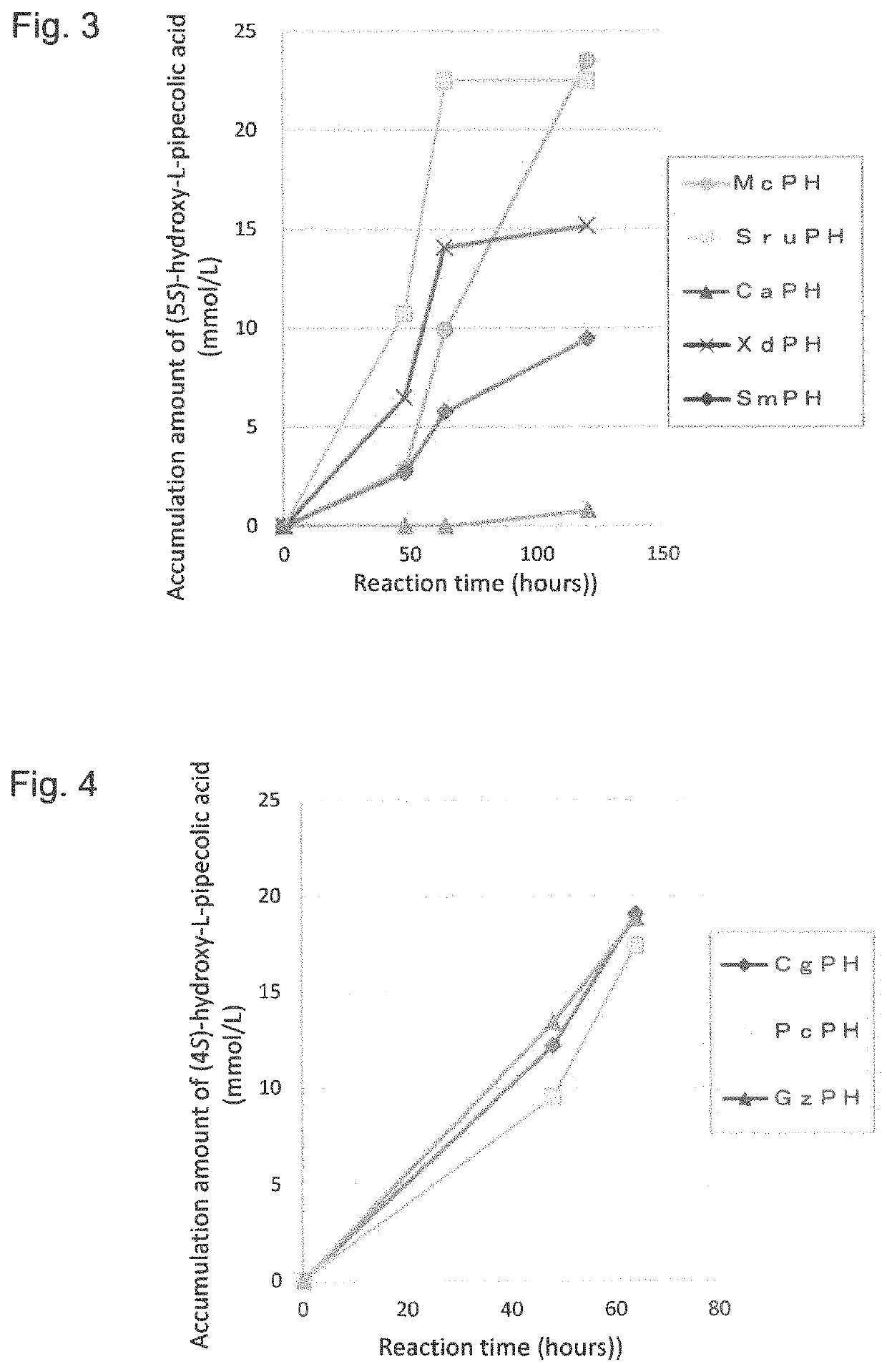Method for producing hydroxy-L-pipecolic acid
a technology of hydroxylpipecolic acid and hydroxylpipecolic acid, which is applied in the direction of enzymology, biochemistry apparatus and processes, transferases, etc., can solve the problems of difficult to obtain pure l-pipecolic acid with complete removal of l-proline, difficult to obtain hydroxyl-pipecolic acid of high purity, and high optical purity. , the effect of reducing the production of hydroxyl-prolin
- Summary
- Abstract
- Description
- Claims
- Application Information
AI Technical Summary
Benefits of technology
Problems solved by technology
Method used
Image
Examples
examples
[0203]Now, the present invention will be described in more detail by way of examples but is not limited thereto.
Cloning of L-Pipecolic Acid Hydroxylase Genes
[0204]A gene encoding the amino acid hydroxylase McPH (GenBank Accession No. WP_030487089; SEQ ID NO: 2), which is annotated as an aspartyl beta-hydroxylase derived from a Micromonospora chokoriensis strain, was artificially synthesized as a gene sequence codon-optimized for expression in E. coli (mcph_OE; SEQ ID NO: 1). The gene was inserted into pJExpress411 (DNA2.0) to construct the plasmid pJ411McPH.
[0205]Similarly, four genes for enzymes exhibiting the activity to catalyze the hydroxylation of L-pipecolic acid at position 5 were cloned.
[0206]The codon-optimized gene sequences sruph_OE (SEQ ID NO: 3), caph_OE (SEQ ID NO: 5), and xdph_OE (SEQ ID NO: 7) for expression in E. coli, which respectively encode the L-pipecolic acid cis-5-hydroxylase SruPH (GenBank Accession No. EFV12517; SEQ ID NO: 4) derived from the Segniliparus ...
PUM
| Property | Measurement | Unit |
|---|---|---|
| temperature | aaaaa | aaaaa |
| temperature | aaaaa | aaaaa |
| temperature | aaaaa | aaaaa |
Abstract
Description
Claims
Application Information
 Login to View More
Login to View More - R&D
- Intellectual Property
- Life Sciences
- Materials
- Tech Scout
- Unparalleled Data Quality
- Higher Quality Content
- 60% Fewer Hallucinations
Browse by: Latest US Patents, China's latest patents, Technical Efficacy Thesaurus, Application Domain, Technology Topic, Popular Technical Reports.
© 2025 PatSnap. All rights reserved.Legal|Privacy policy|Modern Slavery Act Transparency Statement|Sitemap|About US| Contact US: help@patsnap.com



